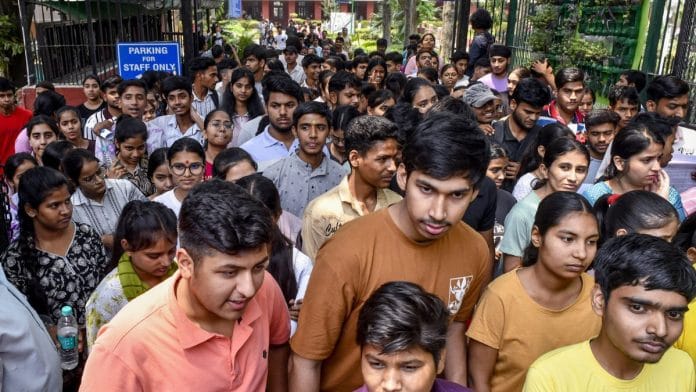New Delhi: One candidate has scored 100 percentile in four out of five subjects, reveal this year’s CUET (Common University Entrance Test) Undergraduate results, while 17 candidates have scored 100 percentile in 3 subjects declared by the National Testing Agency (NTA) on Friday, 4 July.
As per data shared by NTA, 150 candidates have scored 100 percentile in 2 subjects, and a total of 2679 candidates have scored 100 percentile in 1 subject.
In the CUET‑UG 2024, a remarkable 22,920 candidates scored a 100 percentile across 45 subjects, a majority of these students appeared for Commerce and Arts subjects, revealed last year’s NTA data. The highest number of students scored full marks in Business Studies, followed by Political Science, History and English.
The entrance exam, conducted in computer-based test (CBT) mode, witnessed a total of 13,54,699 unique candidates, slightly higher than last year’s 13,47,820. Of these, 10,71,735 appeared, marking a decline of over 41,000 candidates compared to 2024, when 11,13,610 students had taken the test.
CUET-UG, introduced to streamline the admissions process for undergraduate programmes in Central and participating universities, was conducted from 13 May to 4 June. This examination acts as a standardised platform for students to apply to multiple universities across India, including Central, State, and Private institutions, making the process more inclusive. The scores of this examination will be accepted by over 250 central, state, and private universities across India for undergraduate admissions.
This year’s edition offered 37 subjects, including 13 languages, 23 domain-specific subjects, and one General Aptitude Test. Moreover, the question papers were in 13 languages, including English, Hindi, Assamese, Bengali, Gujarati, Kannada, Malayalam, Marathi, Odiya, Punjabi, Tamil, Telugu, and Urdu.
Exams were held in 300 cities across India, and 15 international locations, including Abu Dhabi, Doha, Dubai, Munich, Kuala Lumpur, and Washington, to facilitate access for overseas candidates.
While the gender ratio remained balanced, female participation slightly outpaced male registration for the first time: 6.47 lakh female candidates registered, of which 5.23 lakh appeared, compared to 7.06 lakh male registrations and 5.47 lakh appearances. Notably, five candidates identified as third gender, with three appearing for the exam.
Candidates with disabilities (PwD) also participated in fair numbers, with 4,354 PwD candidates registering, and 3,632 appearing.
General category candidates formed the largest group, with 6.08 lakh registrations and 4.75 lakh appearances. The Other Backward Classes (Non-Creamy Layer) registered 4.44 lakh, followed by Scheduled Castes at 1.44 lakh and Scheduled Tribes at 84,461. Economically Weaker Sections (EWS) showed a drop in participation, with only 73,017 registered, down from over 88,000 last year.
(Edited by Viny Mishra)






